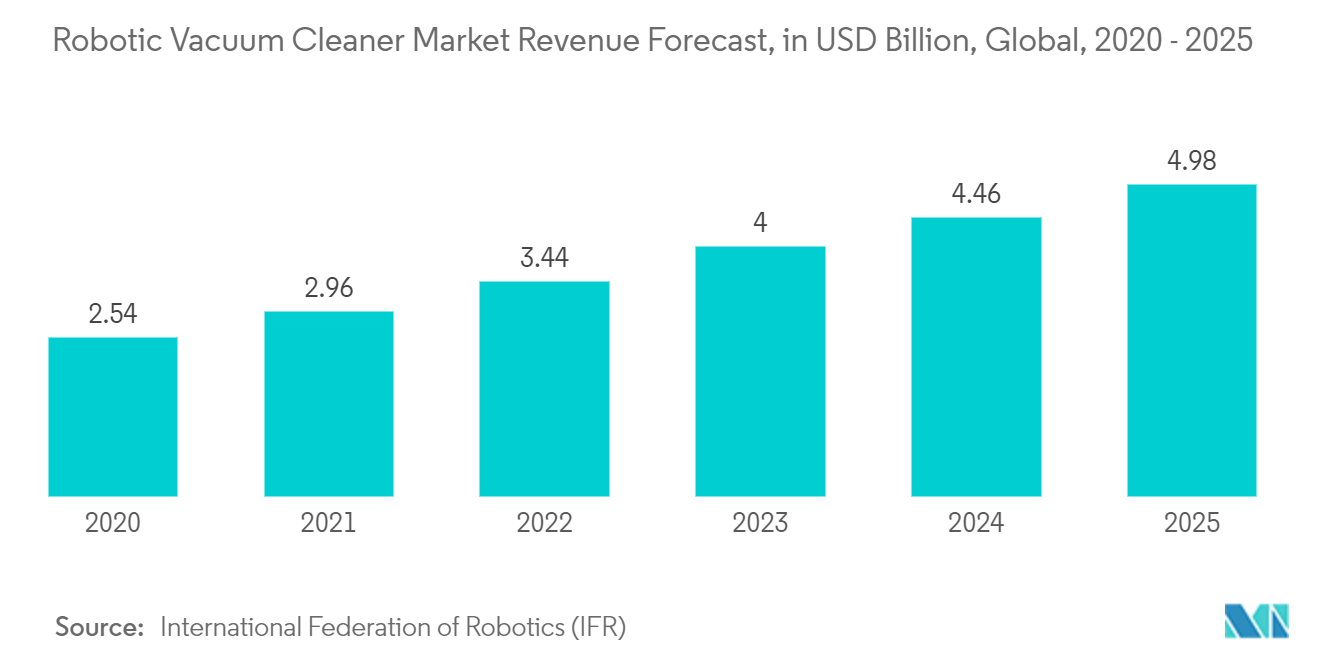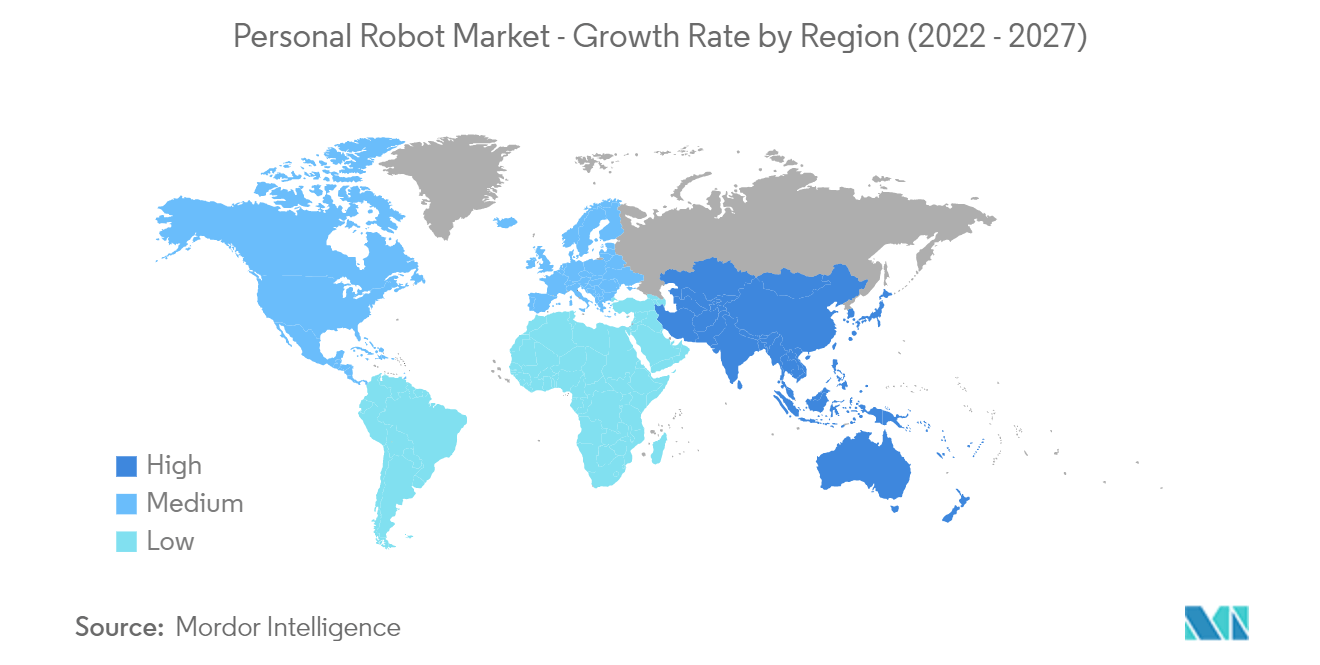Market Trends of Personal Robots Industry
This section covers the major market trends shaping the Personal Robots Market according to our research experts:
Personal Robots for Household Work is Expected to Hold a Major Share of the Market
- Robot companions/assistants/humanoids, vacuuming, floor cleaning, lawn mowing, pool cleaning, and window cleaning, among others, are some of the major types of robots that are increasingly gaining popularity in the household segment of personal robots. According to the data provided by the International Federation of Robotics (IFR) and Loup Ventures, about 22.1 million robotic vacuum cleaners are expected to be shipped by 2025, generating a revenue of approximately USD 4.98 billion.
- Among all the household robots, automated vacuum cleaners and moppers are the companies' most commercialized and developed products. The companies are continuously investing in developing more compact and integrated vacuum cleaners and mopping robots to reach little places at home. The companies are integrating advanced technologies like voice recognition and laser-based technologies to map the floor structure. For instance, in February 2022, Midea Group, a leading global high-technology company, announced details of Midea's S8+ auto-dust-collection robot, its next-gen robot vacuum cleaner, made by Midea Robozone Technology, one of its subsidiaries.
- Companies like iRobot, Robomow, and Mayfield Robotics, are among the prominent players, innovating robots for household space. Innovations, like detecting human behavior and voice recognition, are increasing customer confidence, thus, driving the automated deployment for household purposes, like cleaning, laundry, and other voice-enabled IoT activities.
- Additionally, with the increasing developments in machine vision cameras, companies are also using these 2D and 3D machine vision cameras with AI technologies to map and edges of the floor like staircases effectively and to recognize obstacles such as cables, dustbins, doorsills, and rugs. Incorporating technologies like machine learning, AI, and facial recognition, are also bringing innovations into household robots. For instance, in February 2019, CloudMinds Technology, a developer and operator of cloud AI and robotic solutions, launched its cloud AI-based, highly compliant service robot, the XR-1.

Asia Pacific to Hold Significant Market Share
- The aging population is a primary factor for the significant growth in the deployment of robots in domestic healthcare and assistance applications in the region. The Japanese government has announced funding for the development of eldercare robots to fill the estimated gap of 380,000 skilled workers by 2025. This is expected to drive the adoption of elderly care robots also at their residences in the recent future.
- Robotic wheelchairs are also gaining attraction in the region. Companies like Panasonic are increasingly making efforts to develop innovative wheelchairs that can fulfill different use cases. For instance, in February 2021, All Nippon Airways (ANA) Japan and Panasonic Corporation entered a partnership to test self-driving electric wheelchairs. The collaboration is part of a far-reaching plan to increase mobility and accessibility options at Tokyo Narita International Airport.
- China is expected to become the leading country in terms of personal robot adoption as the country has been making significant efforts lately to become a global leader in the field of robotics. For instance, in December 2021, China's Ministry of Industry and Information Technology, in collaboration with 14 other government departments, unveiled its plans to grow the country's robotics industry in its 14th five-year plan.
- The growing 5G penetration in countries like India is also expected to help push the deployment of security and surveillance robots as the residents can access the data on the go. Countries like India are expected to speed up the deployment of 5G in the coming years, which is expected to create a favorable market scenario for the personal robots market.
- Moreover, APAC is likely to adopt humanoids for almost all major applications. Humanoids are anticipated to be used in personal support and caregiving applications in APAC countries such as China and Japan as the senior population grows.


